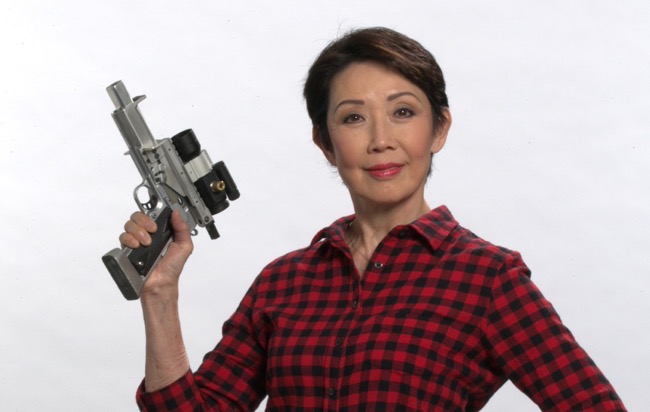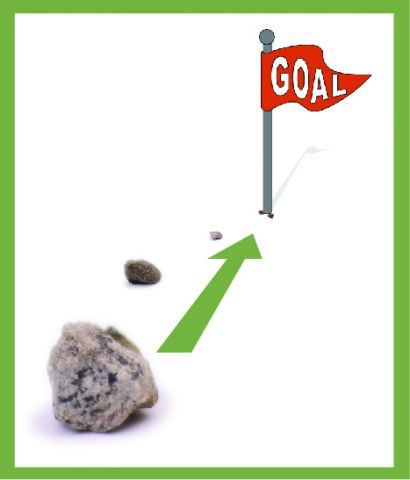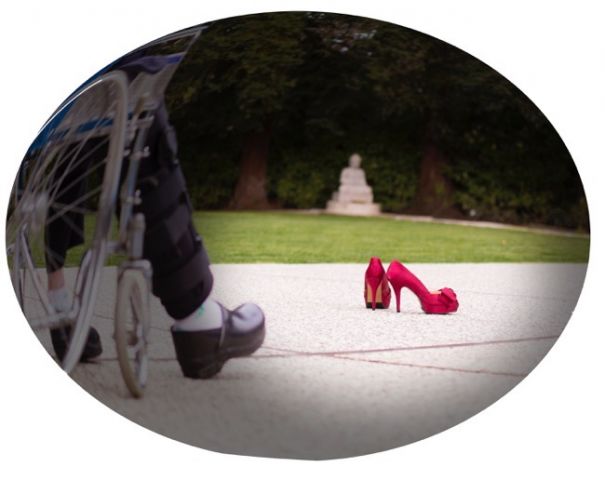Twenty-five yards isn’t far to travel – unless, of course, your leg is broken.
That’s the situation I found myself in during an April day in 2013 at the gun range near Columbia, Mo. I was training for the upcoming Bianchi Cup, the biggest annual event on my calendar. I spent the afternoon practicing alone on the range on a cold, damp day. I only needed to clean up, and I could return to my vehicle and head back to my hotel.

(Jack Hutcheson photo)
The Big Accident
As I stepped over a rope en route to a garbage can, part of my boot got caught, and I fell. I felt searing pain in my right leg. After inspecting of my injury, I knew I had broken my leg.
There was no one on the range to help me. The nearest road was 75 yards away. And, on that dreary day, it was unlikely there would be much traffic on that gravel road, so there was no point in yelling for help. Spending the night on the wet ground and waiting for help to arrive the next day wasn’t appealing, especially because I did not know the severity of my injury and what further damage I could cause by not getting immediate medical attention.
Sponsored by Vera Koo
My last resort was my cell phone, which was locked in my SUV, twenty-five yards away.
I am a goal-oriented person. Goals keep me motivated and help my mind and my commitment to not waver from a task. I set goals regularly throughout my shooting career and for personal projects, as well.
I have found, though, that it is much easier to achieve your overall goal if you set smaller and more easily attainable goals along the way. Call them checkpoints to your final destination.
Lying on the ground, that April day almost 4 years ago, I took stock of my situation and came up with my goal: I needed to travel the 25 yards to my vehicle so I could call for help. It seemed like a daunting task, given my state, with my broken leg hanging worthlessly at my side. Any amount of movement sent a fresh wave of pain through my leg.
So, I broke the task into smaller goals. I noticed 3 rocks between where I was and my vehicle. Those would be my checkpoints.

(Shane Rattazzi of DZR Shoes graphic)
Downhill Skiing Goals
That trick is reminiscent of one I used 52 years ago, when I was learning to snow ski and my goal was to make it down the hill. If I looked at the entire downhill slope at once, I became paralyzed by fear, so I always focused on the 3 feet in front of my skis, where the task seemed manageable.
Lying on my left side, I dragged myself along the ground until I reached the first rock. Then I gathered my breath and proceeded to the next rock, then the next, until finally I found myself in the parking lot and pulled myself into my vehicle, where I called 911 and waited until help arrived.
That scenario with my broken leg is perhaps the most dramatic instance of how I have used small goals to reach a larger one, but it is far from the only instance.
When I started learning how to shoot, I enrolled in a beginner’s class that included 22 shooters. My goal was to become a good shooter. But, considering I knew nothing about shooting at that time, I realized it would be a long process to attain that goal. I quickly made a smaller goal to achieve along the way. From the start, I was an accurate shooter, and I challenged myself to become the best female shooter in the class. That was a manageable goal. Of the 22 shooters in the class, only 3 were women. After 3 months, I had achieved this checkpoint.
Still, I wanted to keep improving. After taking the beginner’s course a second time, I enrolled in the intermediate course and subsequently the advanced course and challenged myself to become the best shooter in the class.
This was a bigger goal than the last, further down the path to becoming good at this sport. The class had more experienced shooters in it than the beginner’s course, and I would be putting my skills to the test against everyone in the class, not just the women.
However, I wasn’t overwhelmed by the challenge. I pushed myself to take one small step after another. I wanted to reach my goal.
Goals are like seeds that germinate in my mind and take root.
They keep me moving forward. It took a year and a half – and many, many hours of practice along the way – but I did become the best shooter in the class.
Shooting Goals
It was time for a new goal. I was 43 at the time. I vowed to see how far I could make it in the sport-shooting world before my 50th birthday. That kept me moving along the journey to where I am today.
Splitting a goal into checkpoints proved helpful while rehabbing my broken leg, too. My overall goal was to compete at the Bianchi Cup the following spring, just more than a year after my injury. It took total dedication to my rehab to make that happen.
I set a fun checkpoint to keep myself motivated. Six months after my injury, there was an NRA Women’s Leadership Forum in Asheville, N.C. Normally, I cannot attend the event, because it happens amid my shooting season. But since I was injured anyway, I thought it would be a good year to attend. And I upped the ante. I told myself that not only would I attend the event, I would do so walking under my own power and wearing high heels.

(Shane Rattazzi of DZR Shoes graphic)
Recovering from that injury took a lot of commitment to my physical therapy, diet and rest. But I never wavered. I had goals I wanted to achieve. Read about Vera’s return to competition here.
I wore high heels to that forum, and, in May 2014, I was back at the scene of my injury, competing at the Bianchi Cup.
All of us have goals we want to achieve in our careers or personal lives. Some of them might be well within reach, and that is good. But don’t give up on those harder-to-reach, long-term goals that might seem daunting when you consider them in their entirety. Instead, try breaking up your goal into smaller checkpoints. Those checkpoints will help keep you motivated along your journey, and, before you know it, you will have traveled all the twenty-five yards required to reach your desired destination.
Vera Koo is a first-generation Chinese American woman. She’s a wife and mother, author, entrepreneur and retired competition shooter. Along with two published books -- "The Most Unlikely Champion" and "Wisdom and Things: Essays From an Unlikely Champion" -- she writes her column, Vera Koo, at "Women’s Outdoor News." View all posts by Vera Koo